Bird migrations are some of the most incredible feats in the animal kingdom. Certain species fly thousands of miles across oceans and continents, navigating natural obstacles and weather patterns. These rare bird species are known for their remarkable long-distance journeys, crossing entire hemispheres to reach breeding or feeding grounds. Their migrations highlight the resilience and navigational skills of birds in the wild. In this article, we will explore a few species renowned for their epic migrations.
Arctic Tern
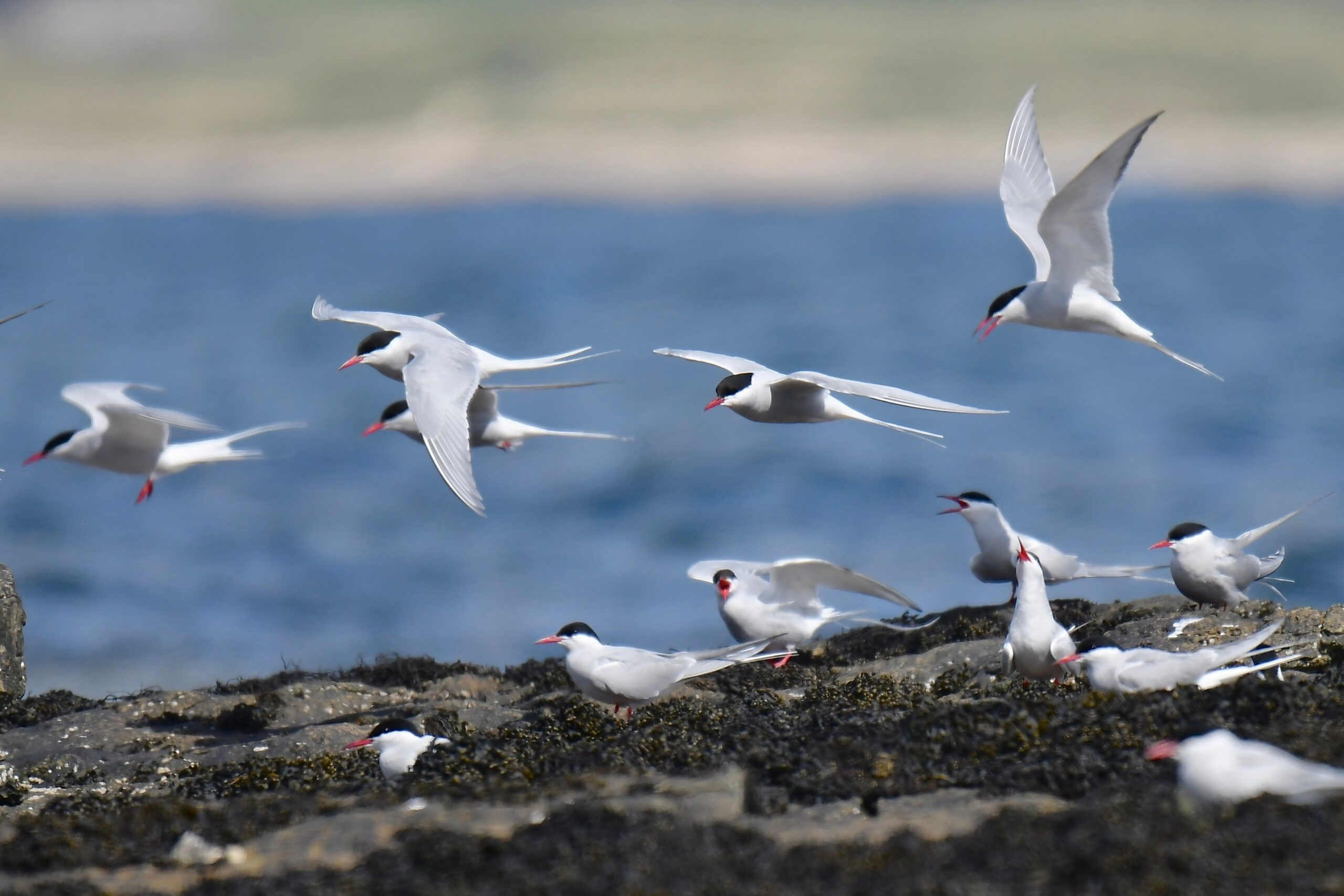
The Arctic Tern holds the title for the longest migration of any bird. It flies between the Arctic and Antarctic, covering a staggering round-trip distance of up to 50,000 miles each year. Found in the northern hemisphere during summer, this small seabird nests in coastal areas across the Arctic and subarctic regions. During winter, it migrates to the Antarctic, enjoying continuous daylight in both of its seasonal homes. The Arctic Tern is widely observed in places like Greenland, Iceland, and parts of North America during breeding season, before heading south for the winter months.
Bar-tailed Godwit

The Bar-tailed Godwit is famous for its non-stop migration journey, which can last over 7,000 miles without rest. It breeds in the Arctic tundra of Alaska and Siberia and migrates to New Zealand and Australia during the non-breeding season. This species holds the record for the longest non-stop flight of any bird. Their journey is powered by an incredible metabolic efficiency, allowing them to cross vast stretches of the Pacific Ocean without stopping. During migration, these birds are often seen along coastal mudflats and estuaries where they stop to refuel before their long journey south.
Red Knot

Red Knots undertake one of the longest migrations among shorebirds, traveling up to 9,000 miles from their breeding grounds in the Arctic tundra to the southern tip of South America. These small, reddish-brown birds rely on key stopover sites along their migratory route, particularly Delaware Bay, where they feast on horseshoe crab eggs to refuel for the next leg of their journey. Found in various locations along the Atlantic coast during migration, Red Knots can also be observed in parts of Europe and Africa, showcasing their wide distribution during different seasons.
Blackpoll Warbler
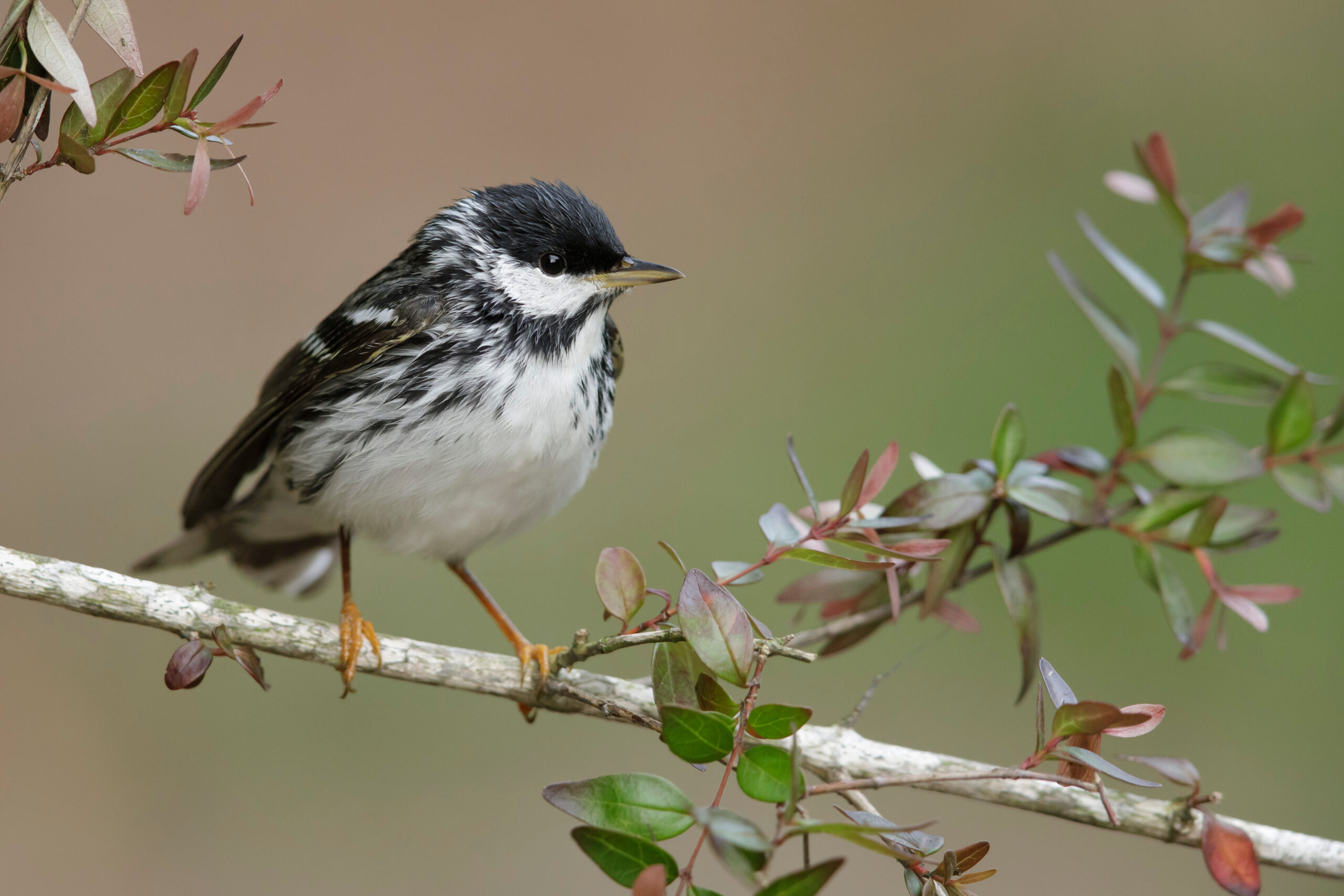
The Blackpoll Warbler, a small songbird, embarks on an extraordinary migration each year. Despite its size, it flies non-stop from northeastern North America to South America, crossing the open ocean. Covering distances of up to 2,000 miles, these warblers rely on fat stores to survive the journey. They breed in the boreal forests of Canada and Alaska and migrate to northern South America for the winter. This long migration path makes the Blackpoll Warbler a species of great interest among birdwatchers in both North and South America.
Sooty Shearwater
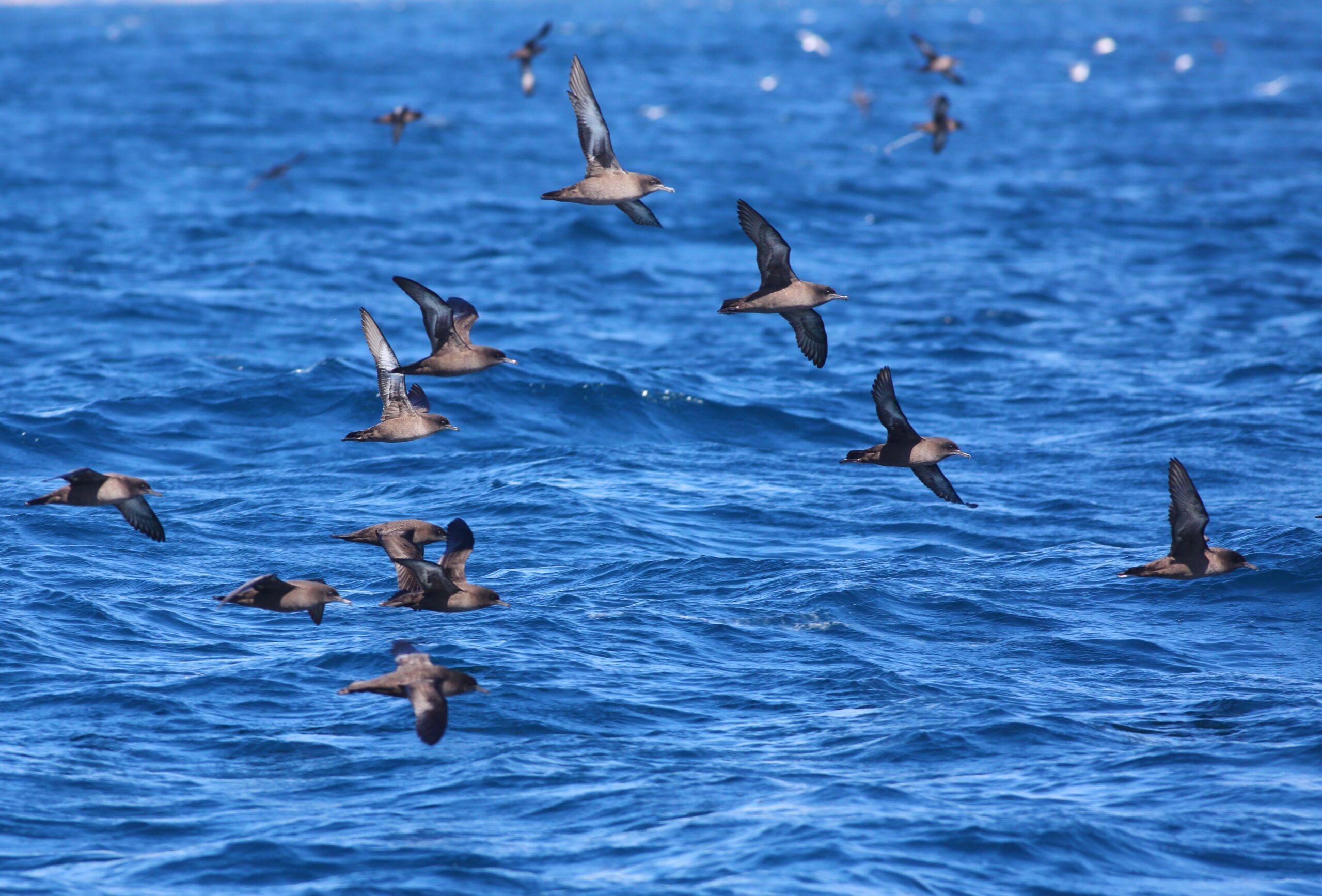
The Sooty Shearwater undertakes one of the longest migrations of any bird species, traveling over 40,000 miles in a figure-eight pattern across the Pacific Ocean. It breeds in the southern hemisphere, particularly in New Zealand and Chile, and migrates to feeding grounds in the northern Pacific near Japan, Alaska, and California. These seabirds are often seen soaring over open ocean waters, using dynamic soaring techniques to cover vast distances with minimal effort. The Sooty Shearwater’s epic migration provides a fascinating glimpse into the endurance of seabirds.
Northern Wheatear
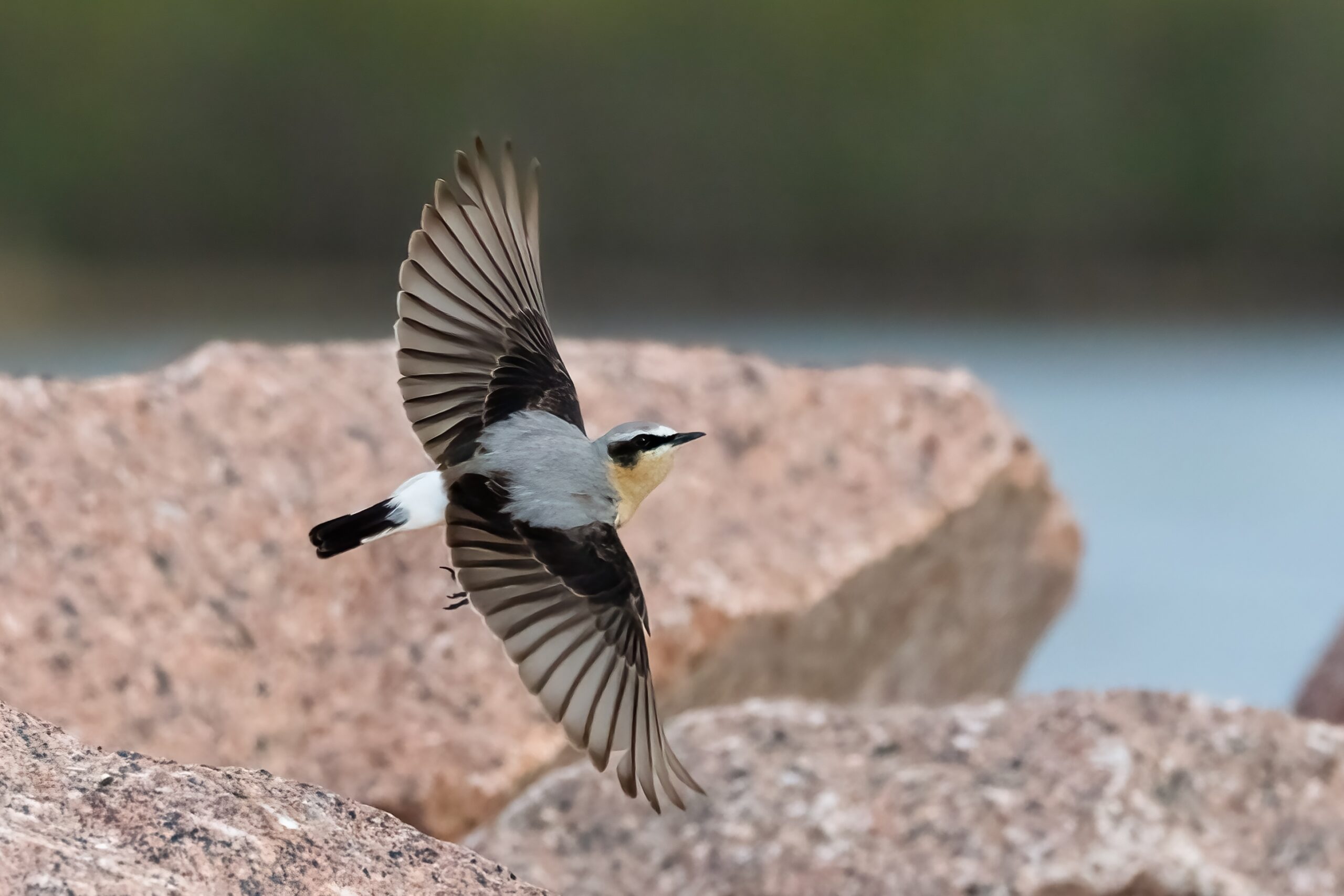
The Northern Wheatear completes one of the most astonishing migrations for its size, traveling from its breeding grounds in North America and Eurasia to wintering sites in sub-Saharan Africa. Remarkably, some individuals travel across the entire width of Asia, while others cross the Atlantic Ocean. These small, ground-dwelling birds nest in rocky or open habitats across the northern hemisphere and migrate thousands of miles to more temperate climates during winter. They can be spotted in Europe, Greenland, and Canada before beginning their incredible journey to Africa.
Pacific Golden Plover
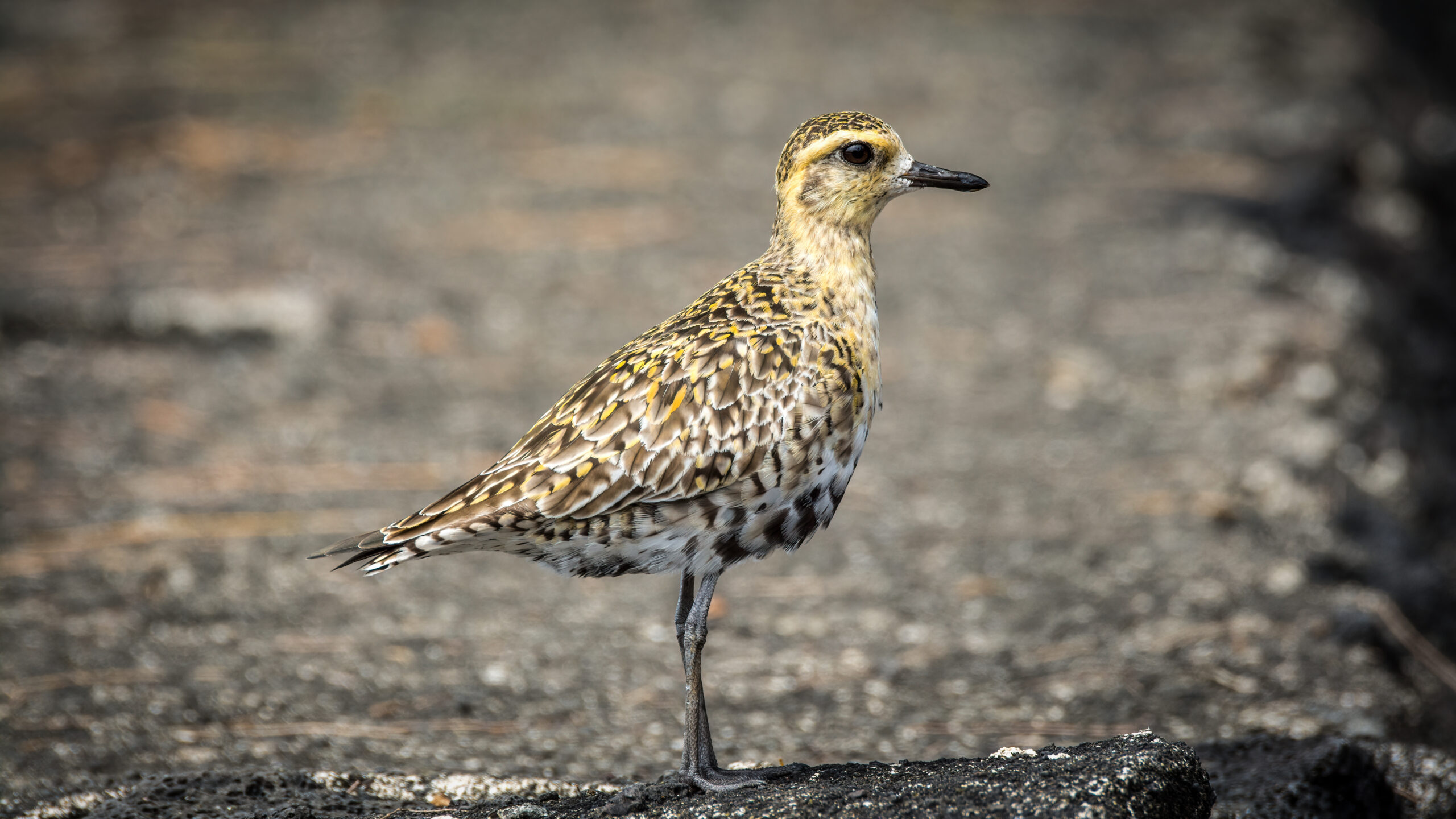
The Pacific Golden Plover is known for its remarkable transoceanic migration. It breeds in the Arctic regions of Alaska and Siberia and migrates to tropical islands in the Pacific, including Hawaii and parts of Southeast Asia, during the non-breeding season. These plovers are known to fly non-stop over the open ocean, covering up to 3,000 miles in a single flight. Their migratory path takes them across vast stretches of the Pacific, making them a key species in studies of long-distance bird navigation. The Pacific Golden Plover is often seen foraging along coastal shores and grasslands during migration.
Swainson’s Hawk
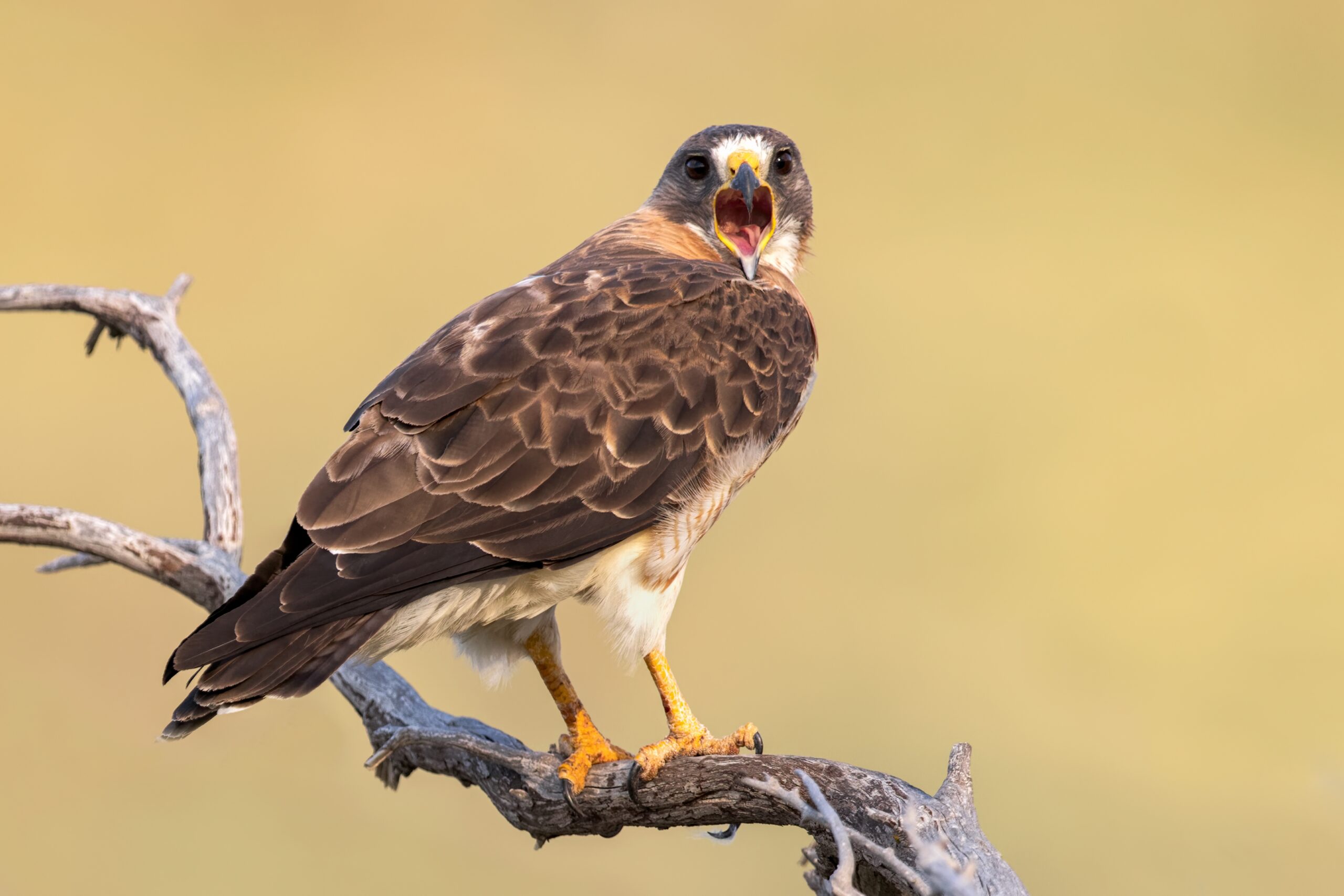
Swainson’s Hawk undertakes one of the longest migrations among raptors, traveling up to 10,000 miles between its breeding grounds in North America and wintering sites in Argentina. These hawks breed in the grasslands and agricultural fields of the western United States and Canada. During migration, they often gather in large flocks known as “kettles,” soaring on thermal currents to conserve energy. Their population is estimated to be around 360,000 individuals, though habitat loss and pesticide use have caused some regional declines. You can observe Swainson’s Hawks in the Great Plains, and they are a familiar sight in Central and South America during winter.
Amur Falcon
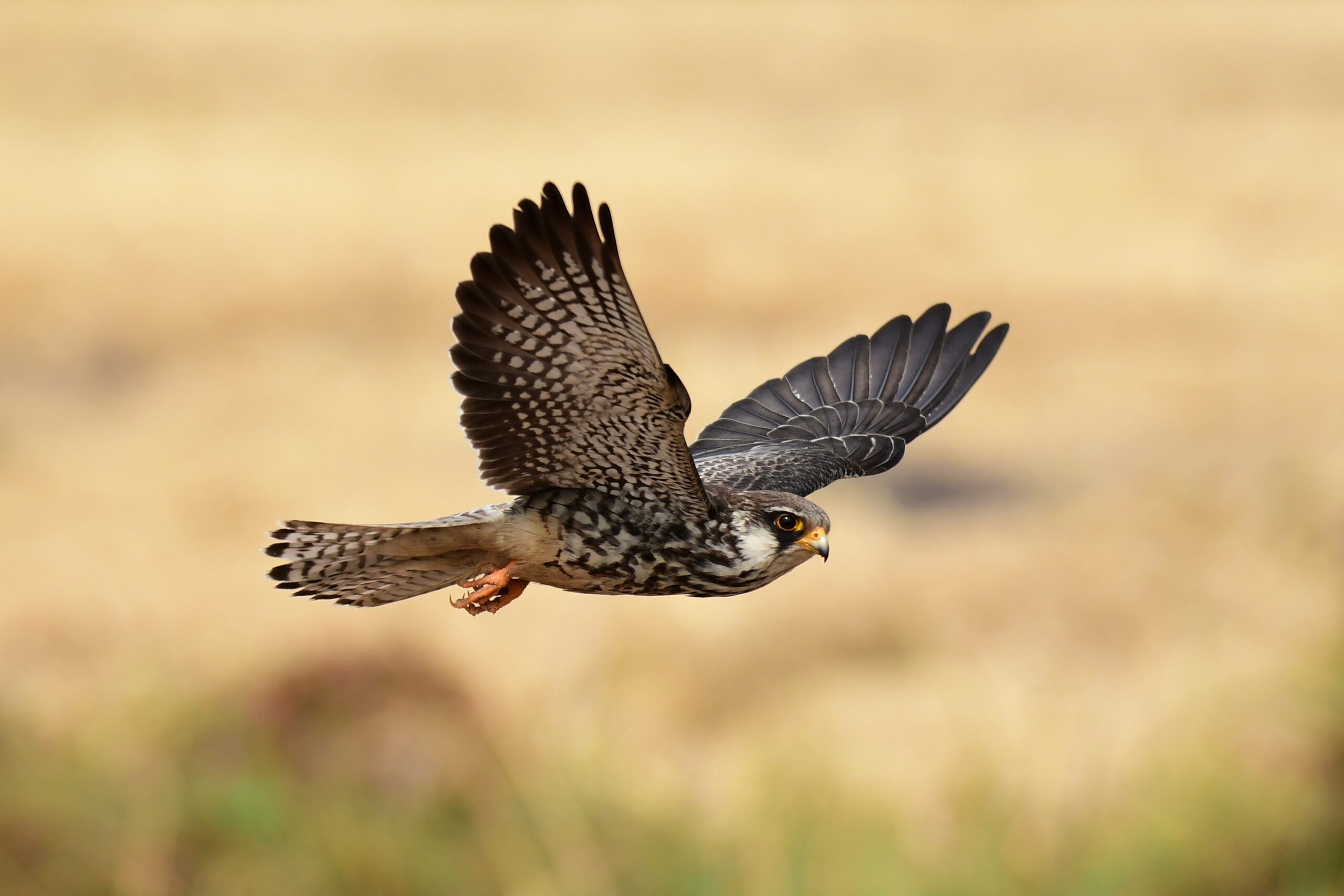
The Amur Falcon is remarkable for its long migration from eastern Asia to southern Africa. Each year, this small raptor flies over 9,000 miles, crossing the Indian Ocean. Breeding in southeastern Siberia and northern China, they migrate through India and stop in northeast India for a major refueling before continuing their journey. Their population, currently estimated at 1 million, was once threatened by large-scale hunting during migration but conservation efforts have significantly helped. The Amur Falcon is commonly seen roosting in large numbers during migration in India, and their wintering sites stretch across southern Africa.
White-rumped Sandpiper
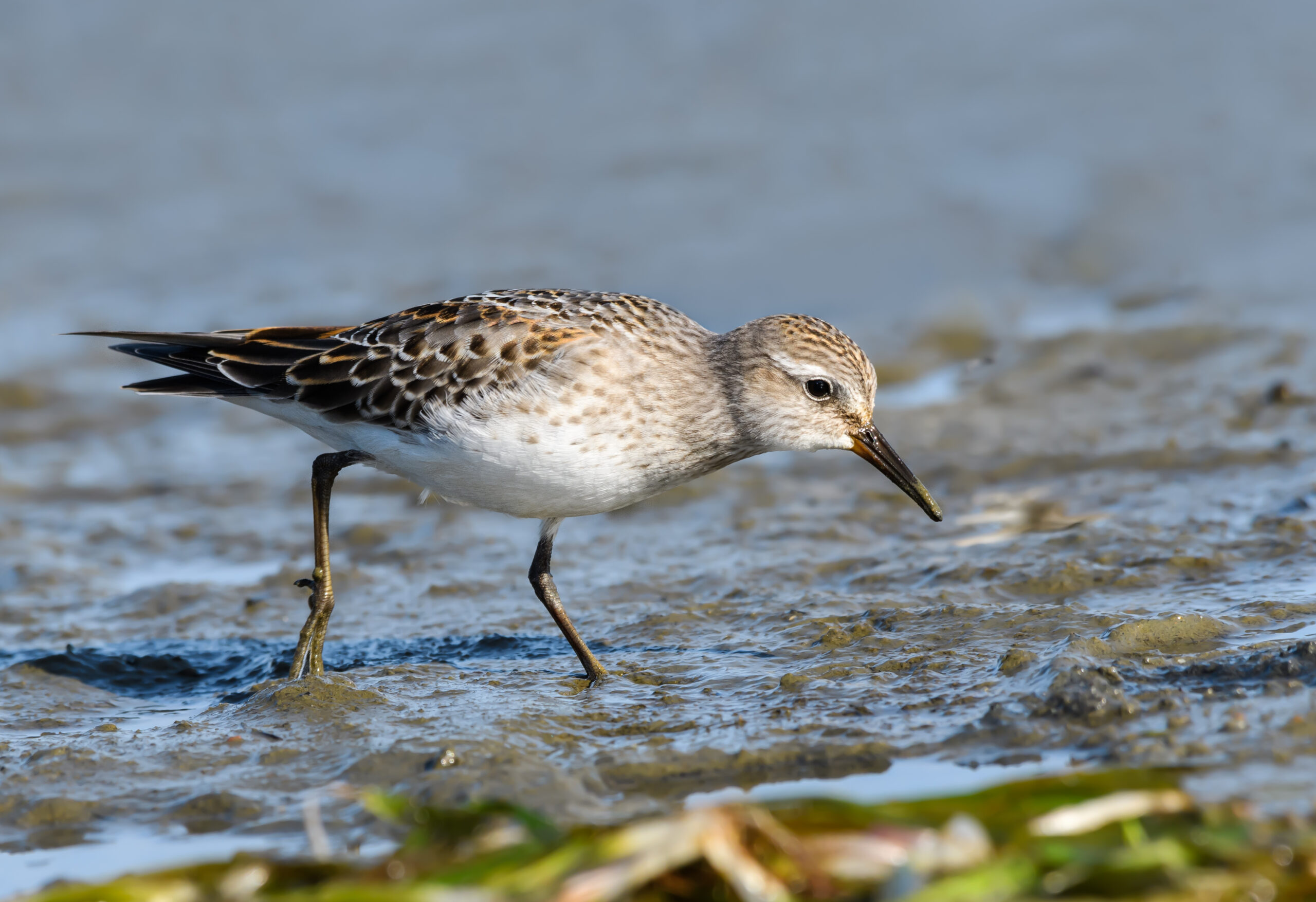
The White-rumped Sandpiper is a small shorebird with an impressive migration route. It breeds in the high Arctic regions of Canada and Alaska and migrates to South America, traveling as far as Argentina and southern Brazil. Covering up to 9,000 miles, these birds make critical stopovers in North America’s coastal wetlands to feed and refuel. Their population is currently stable but not abundant, estimated at around 500,000 individuals. These sandpipers are typically spotted along coastal areas, mudflats, and wetlands during migration.
Pectoral Sandpiper
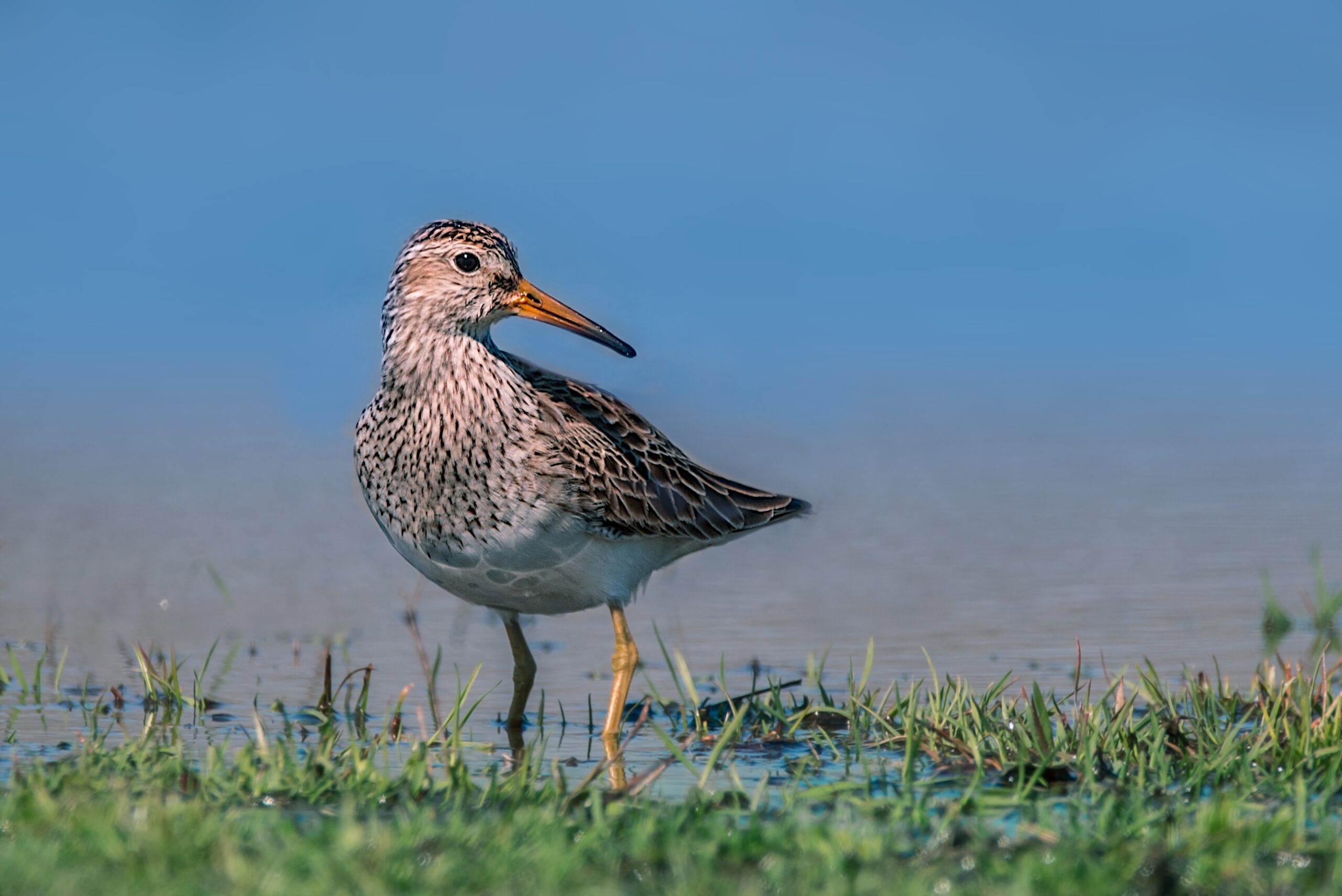
Pectoral Sandpipers have one of the longest migrations among shorebirds, flying from the Arctic tundra in North America to as far as southern South America. They are commonly seen migrating through North America, especially along the coasts and wetlands. These birds prefer grassy marshes and mudflats to feed on invertebrates during their journey. Their population is estimated at around 1.5 million, but habitat loss in their stopover and wintering grounds poses challenges. They travel vast distances between breeding and wintering sites, relying heavily on wetland habitats along their route.
Bristle-thighed Curlew

The Bristle-thighed Curlew embarks on an extraordinary migration, flying from its breeding grounds in western Alaska to islands in the South Pacific, including Hawaii and Micronesia. Covering over 4,000 miles, these curlews are unique in their ability to molt and become flightless for a short period after arriving in their wintering grounds. With a population of around 10,000 individuals, they are considered a vulnerable species due to habitat destruction and predation during migration. These birds are often spotted in coastal areas and grasslands during migration.
Greater Flamingo
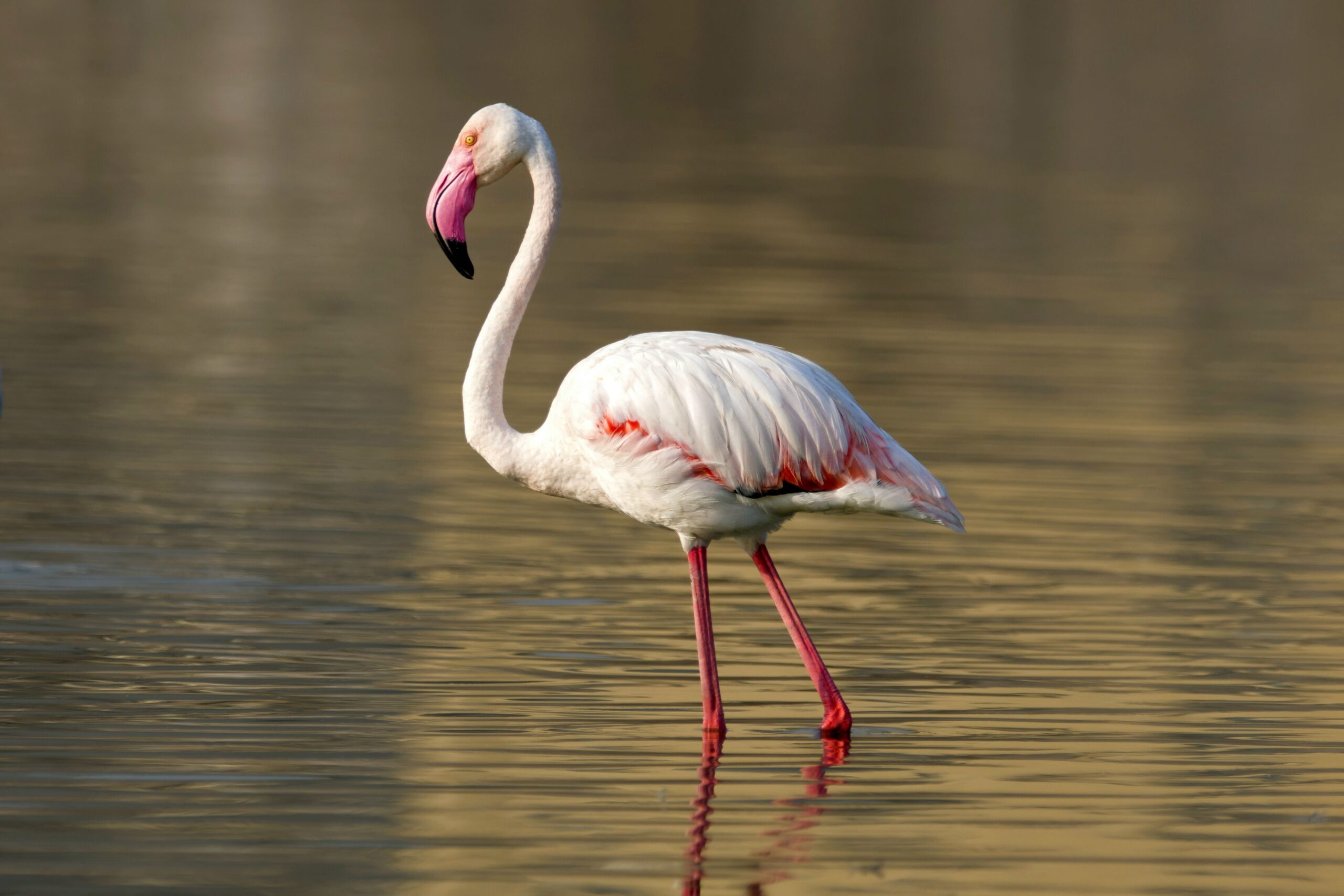
Greater Flamingos are known for their impressive yet irregular migration patterns, particularly in response to changes in water levels at their breeding sites. Found across parts of Africa, southern Europe, and South Asia, these striking birds migrate between wetlands and saline lakes. They breed in large colonies, and their migration can cover up to 600 miles. The global population of Greater Flamingos is approximately 500,000 individuals. In Europe, flamingos migrate from places like Spain and France to North Africa during winter. These birds are most commonly seen in large flocks near shallow lakes and lagoons.
Rufous Hummingbird
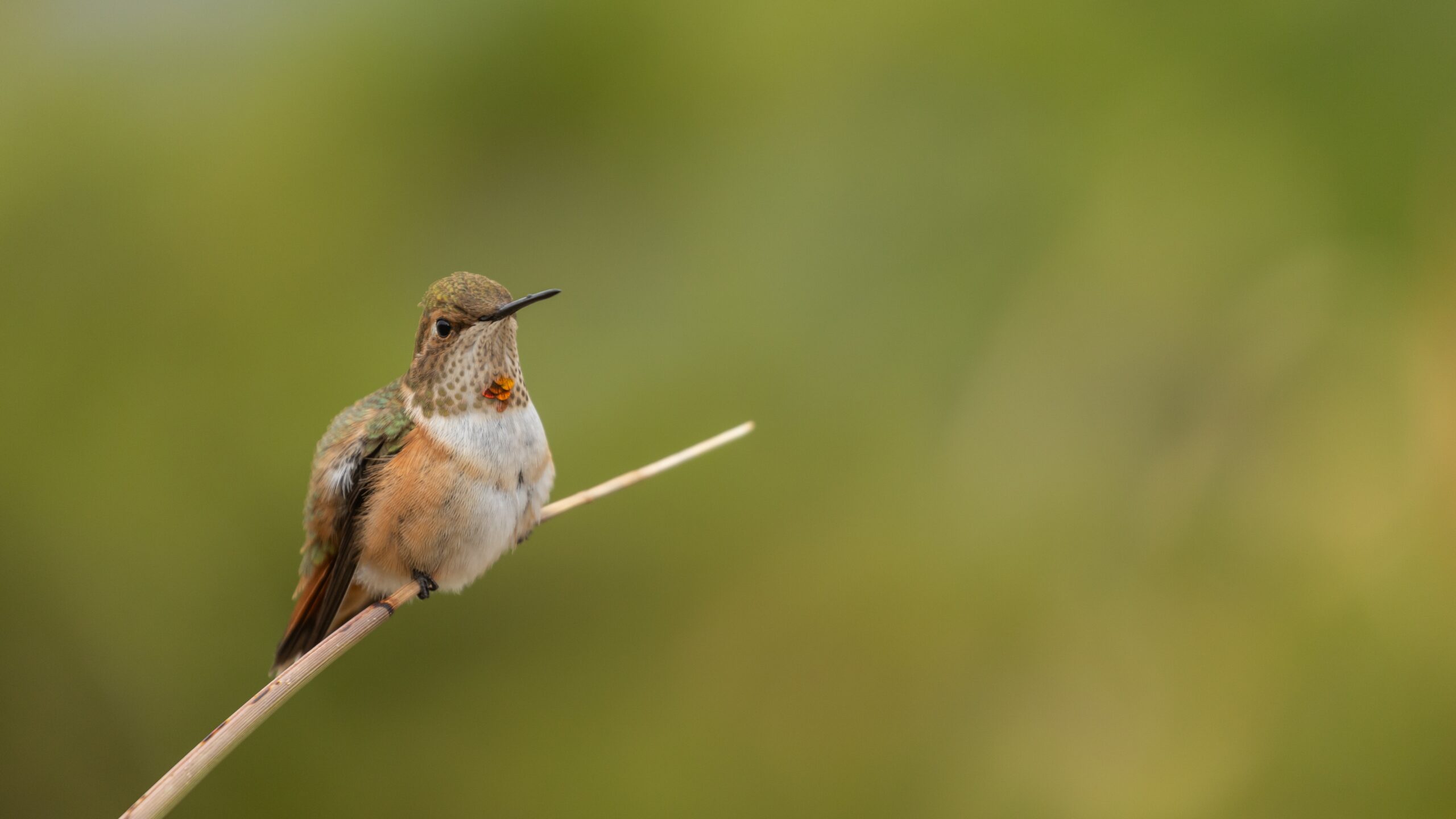
The Rufous Hummingbird makes one of the longest migrations relative to its body size, traveling up to 3,000 miles from breeding grounds in the Pacific Northwest of the U.S. and Canada to Mexico for the winter. They are known for their aggressive nature despite their small size, defending feeding territories vigorously. Their population is estimated at around 19 million, though they face threats from habitat loss and climate change. These hummingbirds are often spotted in flower-filled gardens, meadows, and mountain ranges during their migration across the western United States.
Sabine’s Gull
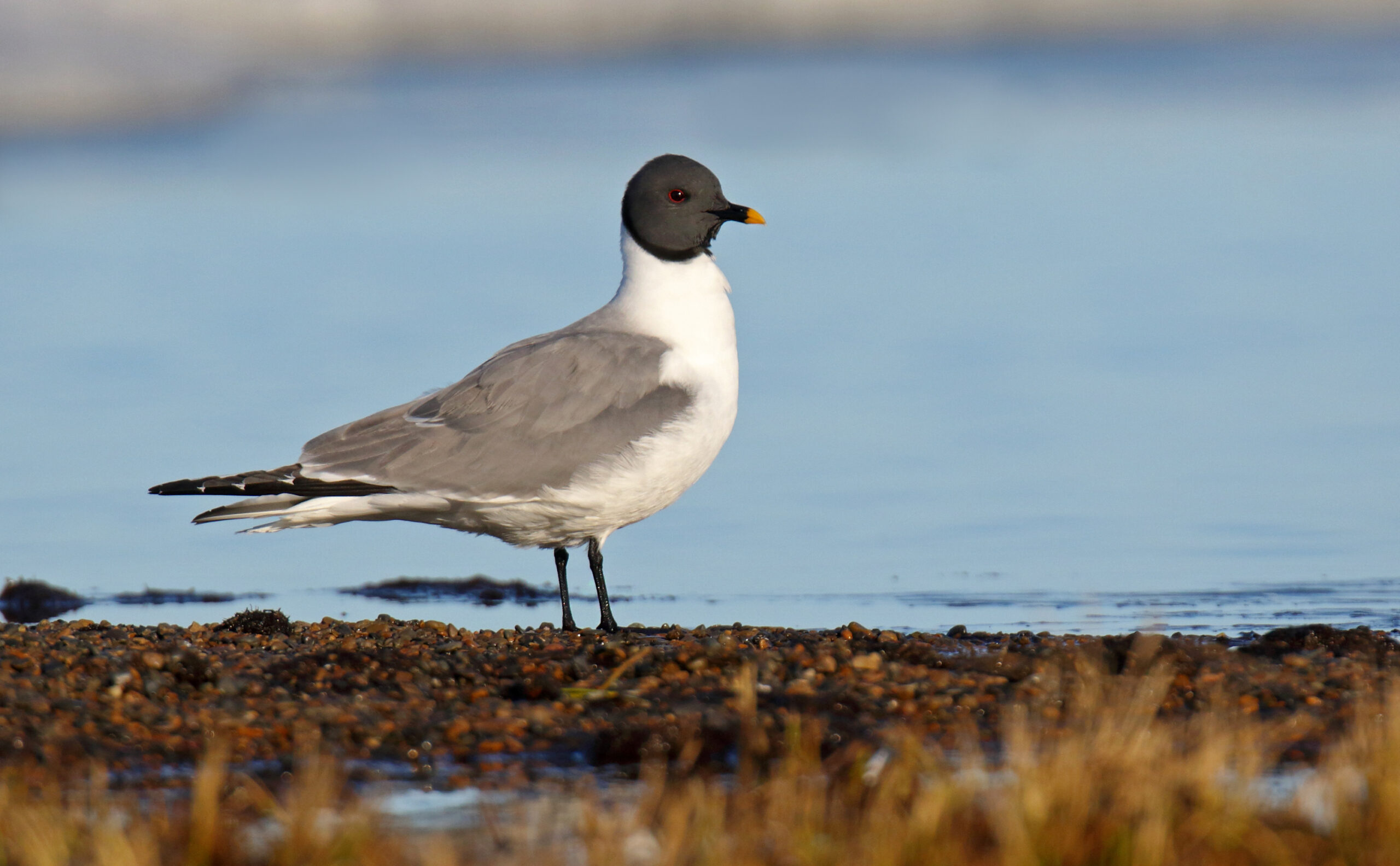
Sabine’s Gull is a small, striking seabird known for its long-distance migration. It breeds in the Arctic regions of North America, Greenland, and Siberia. During migration, it travels thousands of miles to its wintering grounds along the coasts of South America and southern Africa. The migration covers over 7,000 miles, often crossing open ocean. Its global population is estimated at around 200,000 individuals. Sabine’s Gulls are frequently observed along the North Atlantic and Pacific coasts during their southward journey.
Lesser Sand Plover
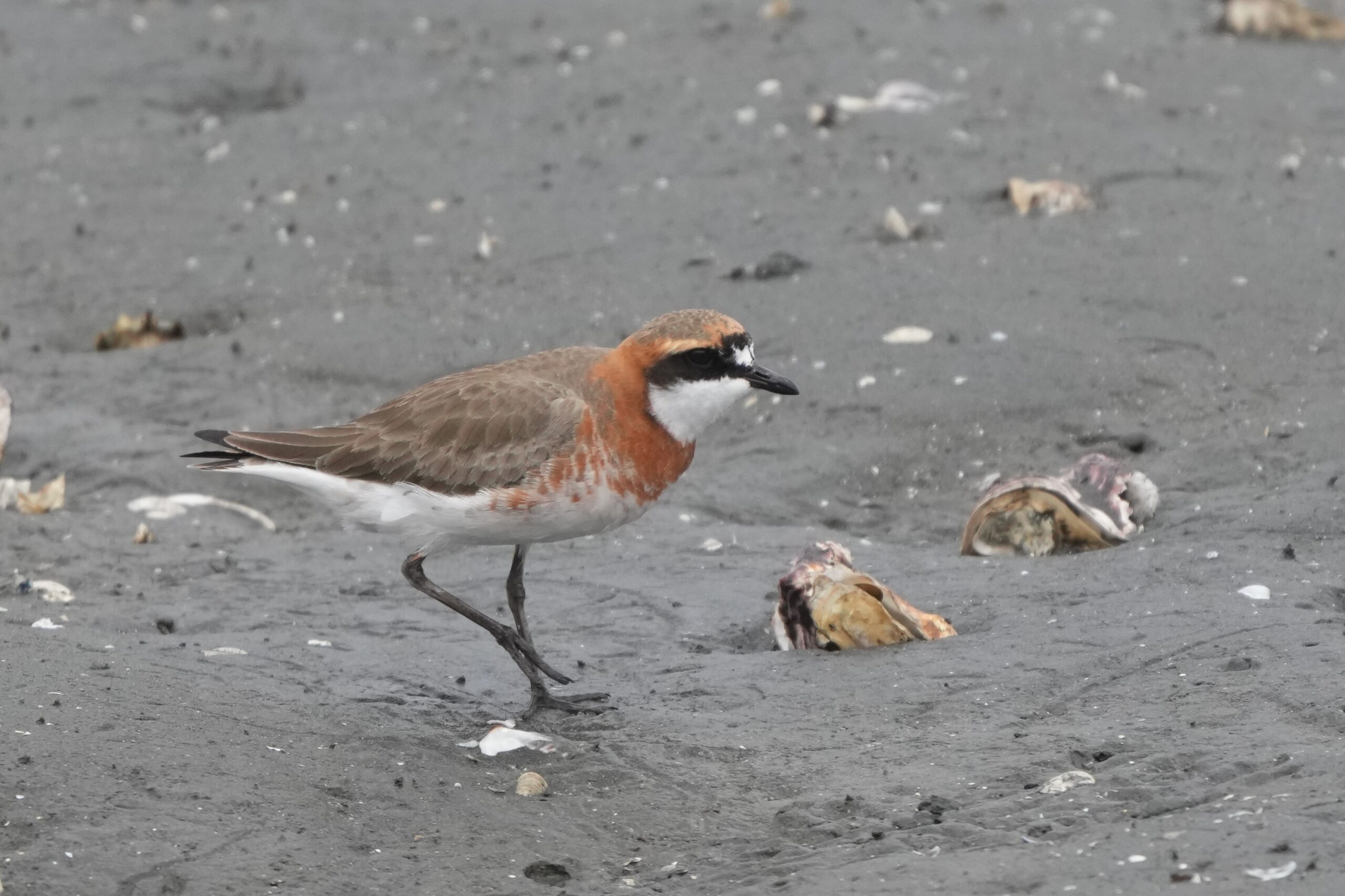
The Lesser Sand Plover is a shorebird that migrates from its breeding grounds in the high-altitude deserts and tundras of Central Asia to coastal areas of Southeast Asia, Australia, and East Africa. These birds undertake migrations of up to 8,000 miles, navigating across continents. Their population is estimated at around 310,000 individuals. They are typically found in coastal mudflats and sandy beaches, especially during their migration and wintering periods.
European Bee-eater
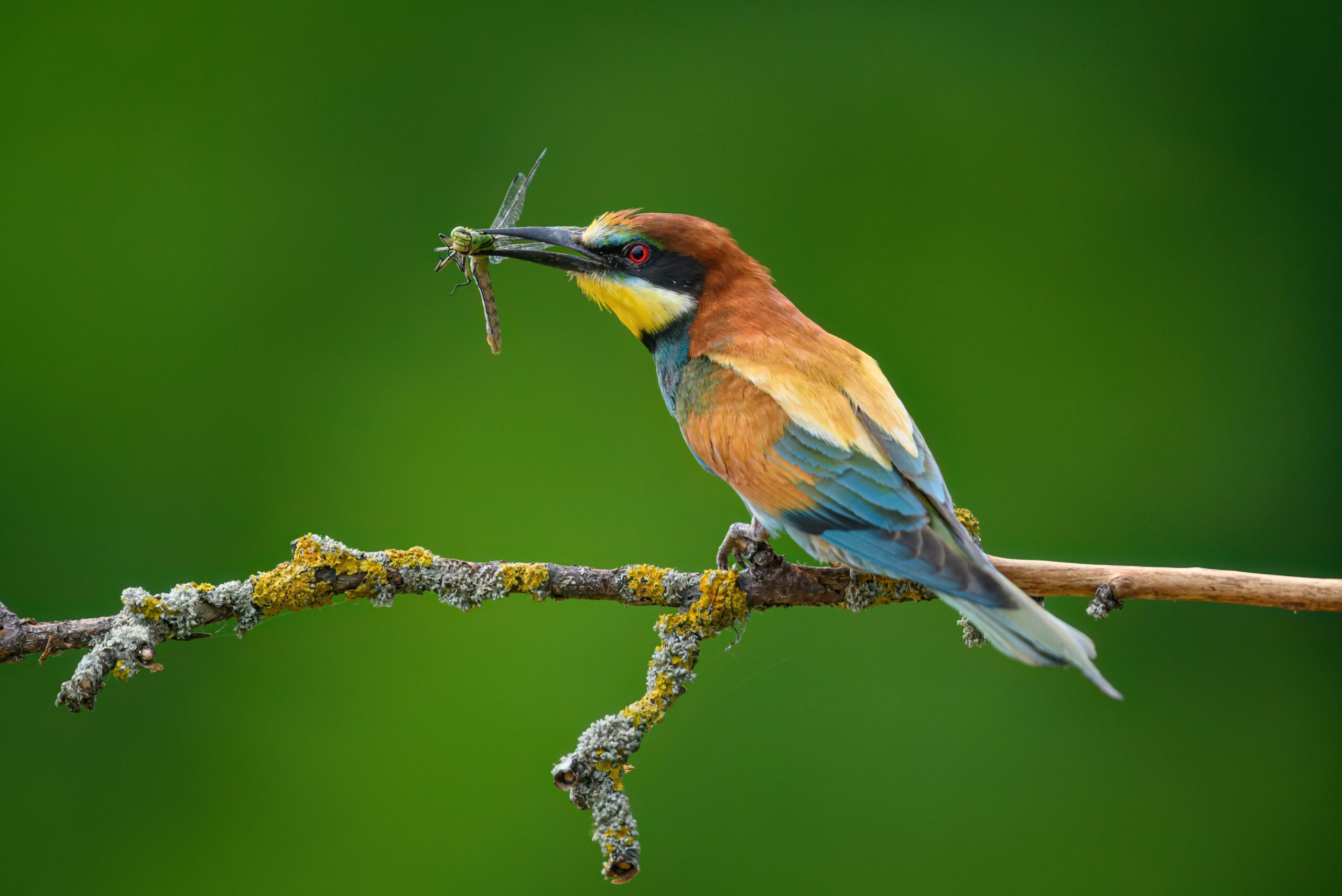
The European Bee-eater is known for its vibrant colors and long migrations from southern Europe and parts of Asia to sub-Saharan Africa. These birds travel up to 6,000 miles each year, returning to their breeding grounds in Europe during spring. European Bee-eaters are commonly found in open woodlands and grasslands, where they hunt insects mid-flight. Their population is relatively stable, with an estimated 2-4 million individuals across their range. You can spot them in parts of southern Europe, Africa, and Central Asia.
Baird’s Sandpiper
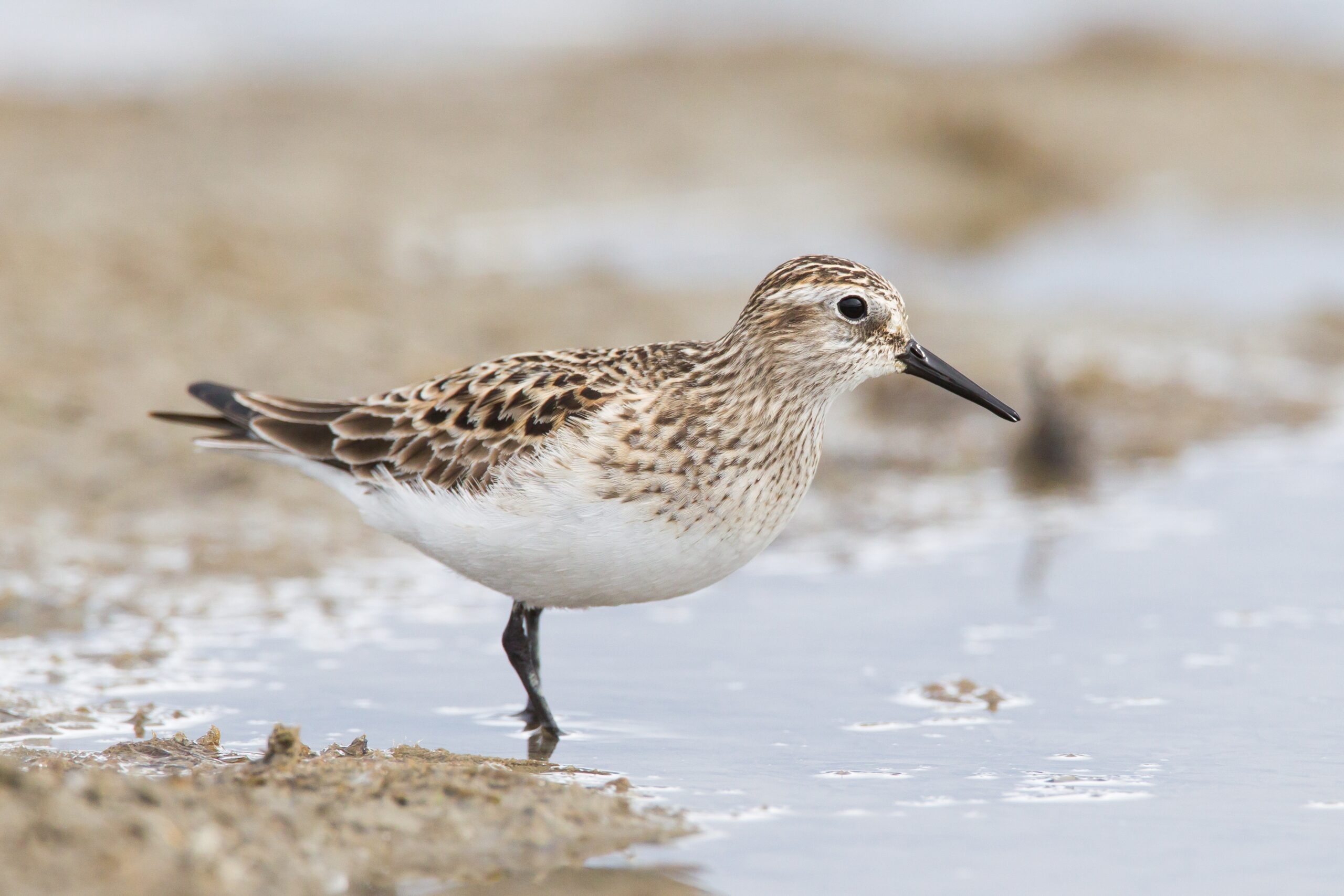
Baird’s Sandpiper is a small shorebird with an extensive migration that spans from the Arctic tundra, where it breeds, to South America, where it winters. Covering distances up to 9,000 miles, these birds rely on wetland stopovers to refuel during their journey. Their population is estimated at around 300,000 individuals. They are often found in mudflats, coastal areas, and freshwater marshes during migration, and are a common sight along both North and South American coasts.
Great Snipe
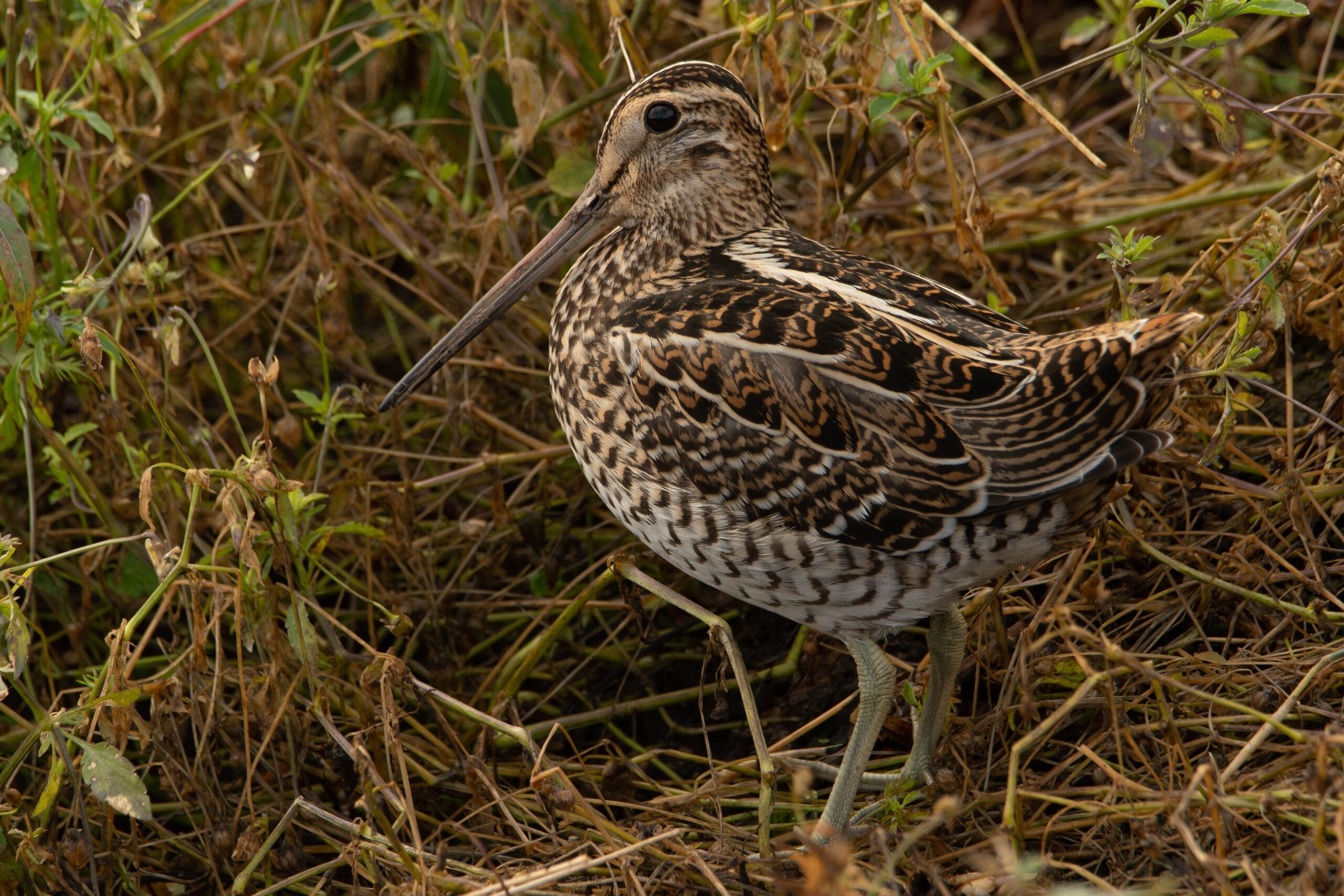
The Great Snipe is a rare migratory bird that flies from breeding grounds in Northern Europe and parts of Russia to sub-Saharan Africa. What makes the Great Snipe extraordinary is its ability to fly non-stop for up to 4,000 miles without feeding or resting. Their population is estimated at approximately 300,000 individuals, but they are under pressure from habitat loss. During migration, they can be spotted in wetlands and grasslands, where they feed on invertebrates.
Fork-tailed Flycatcher
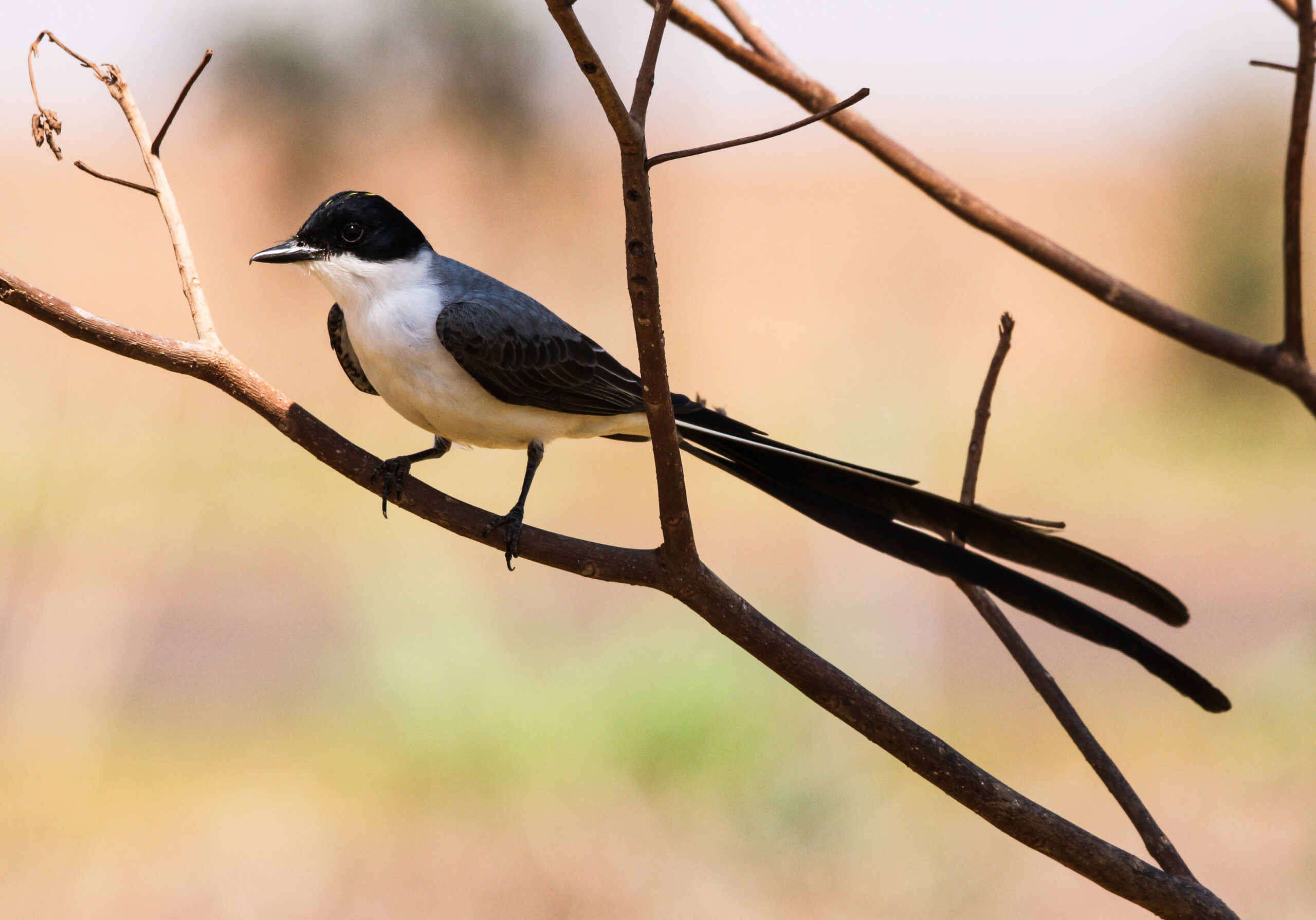
The Fork-tailed Flycatcher is known for its impressive tail and migratory journey from South America to Central America and, in rare cases, as far north as the United States. These birds migrate primarily in search of better feeding grounds, flying thousands of miles in the process. They prefer open areas, including savannas, grasslands, and agricultural fields. Their population is stable, with an estimated several million individuals, but they remain a rare sight outside their typical South American range.
Purple Martin
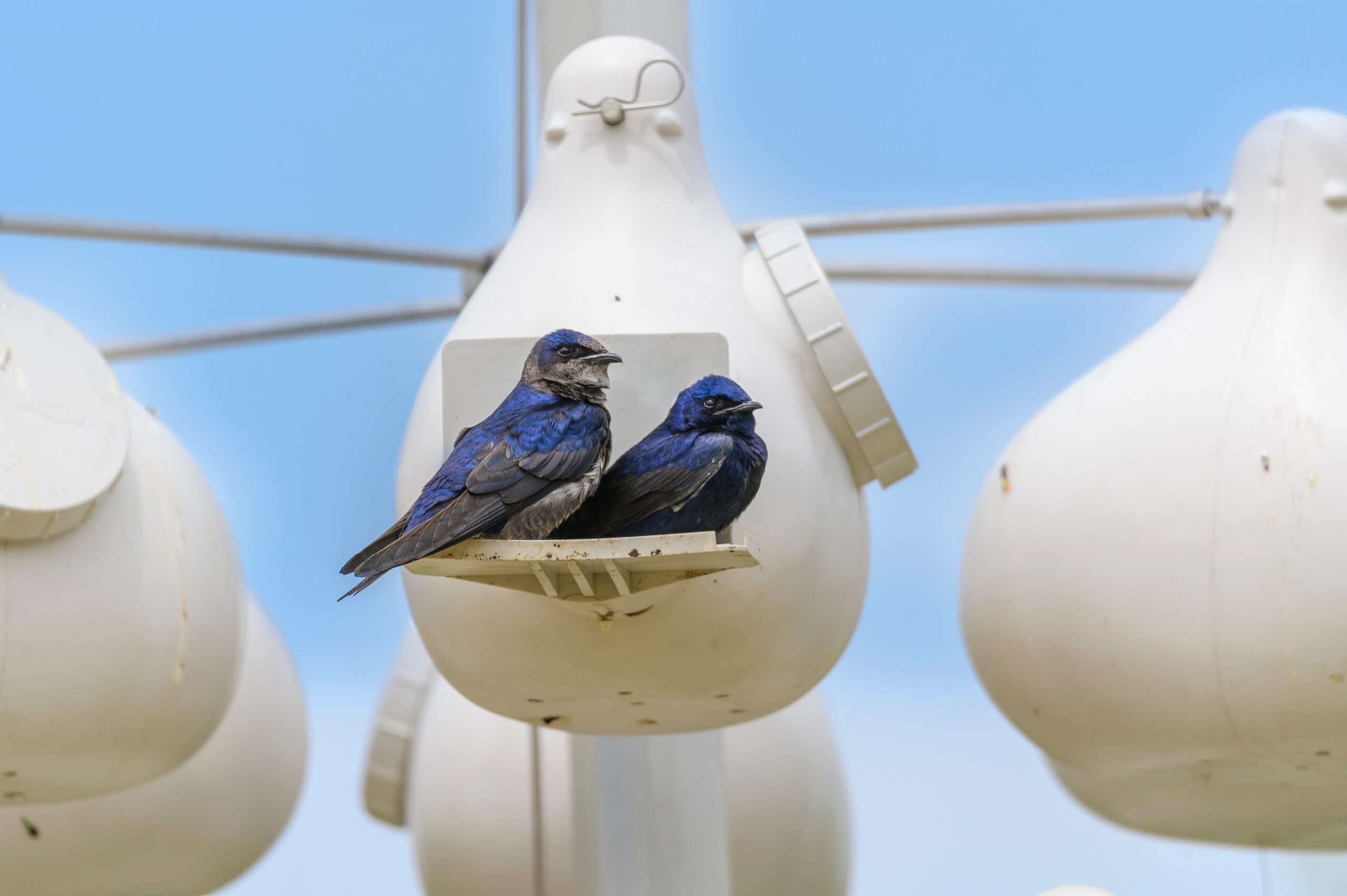
Purple Martins are among the longest-distance migratory swallows in the Americas. They breed in North America and migrate to the Amazon Basin in South America for the winter, covering up to 5,000 miles each way. They are often seen in large communal roosts during migration. Their population is estimated at around 7 million, but they are dependent on artificial nesting sites in many parts of their range. You can commonly observe them near water, in fields, or in suburban areas during their breeding season.
Red-necked Phalarope
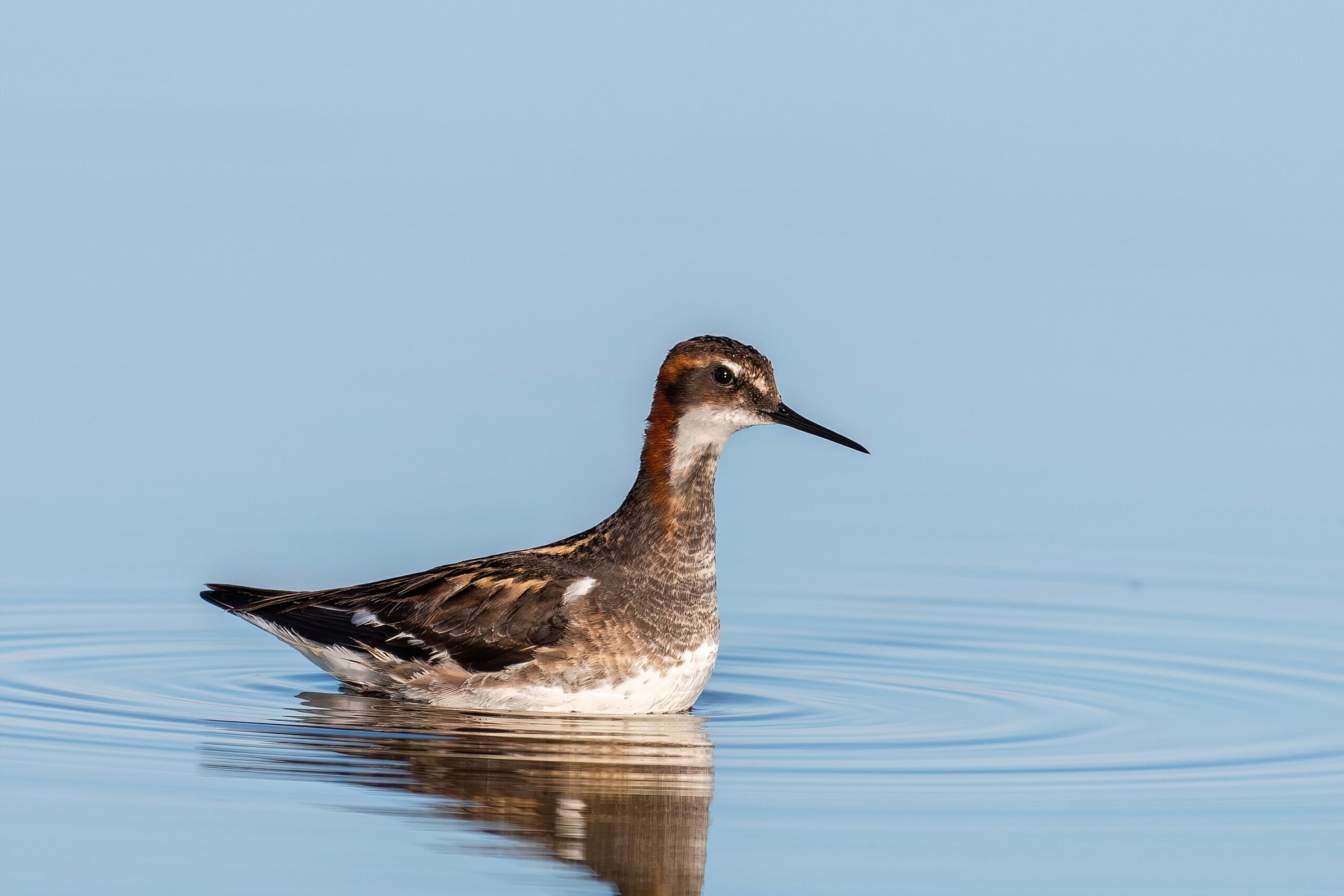
The Red-necked Phalarope is a small shorebird with a remarkable migratory journey that spans the Arctic regions of North America, Europe, and Russia to the tropical oceans around South America, Africa, and the Arabian Peninsula. These birds travel vast distances, often migrating over 10,000 miles. Their population is estimated at over 1 million individuals, though numbers fluctuate with changing environmental conditions. Red-necked Phalaropes are unique for their oceanic wintering habits, often found spinning on the surface of the water to catch food during migration.
This article originally appeared on Rarest.org.
More from Rarest.org
15 Antique Tractors That Revolutionized Farming

Antique tractors played a vital role in revolutionizing farming, transforming the way crops were grown and harvested. Read More.
17 Forgotten Literary Works That Gained Popularity Later

Some literary works are destined for immediate fame, while others take time to find their audience. Read More.
20 Exotic Birds With Stunning Plumage Found in Remote Islands
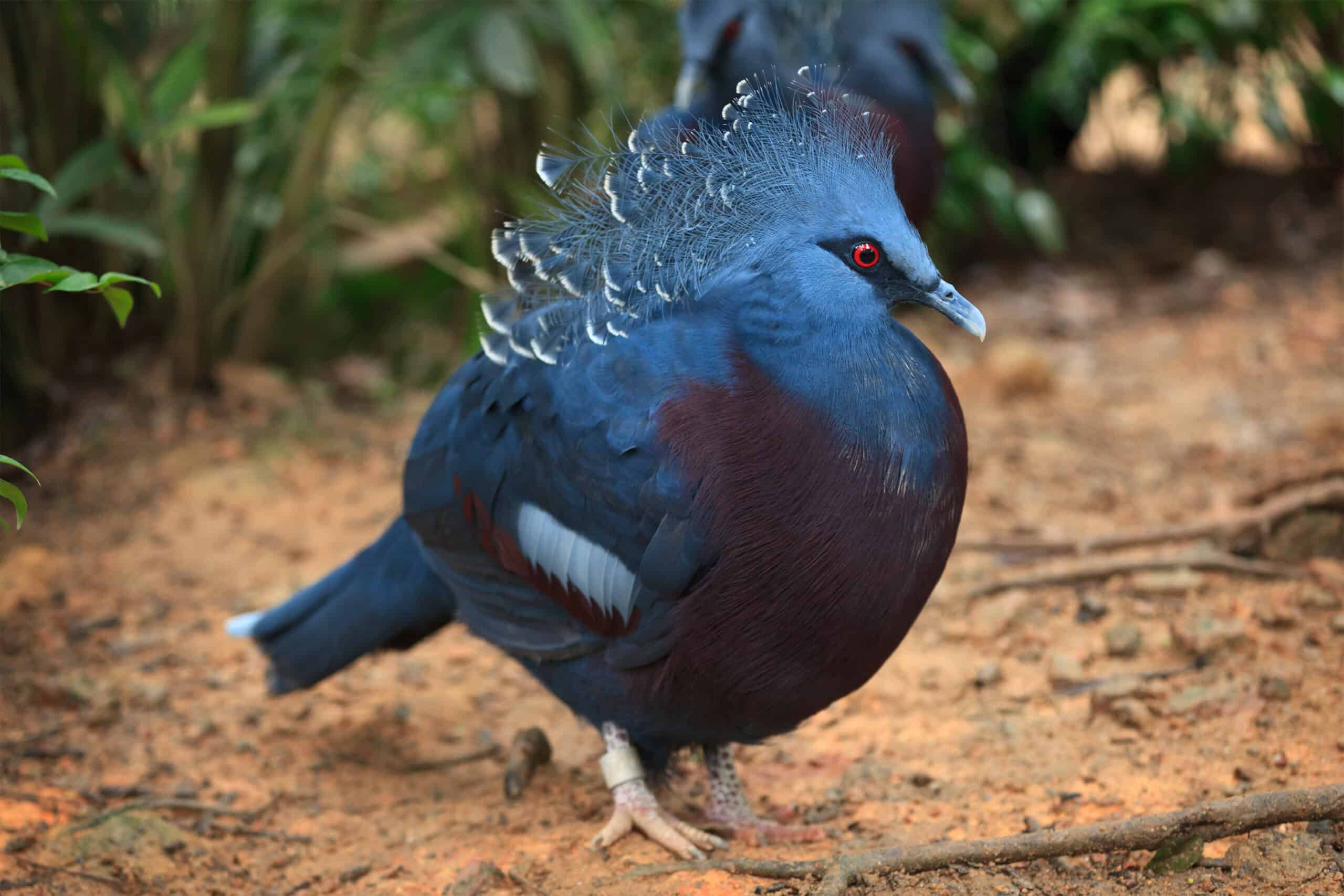
The world’s remote islands are home to some of the most exotic and visually stunning birds on the planet. Read More.
